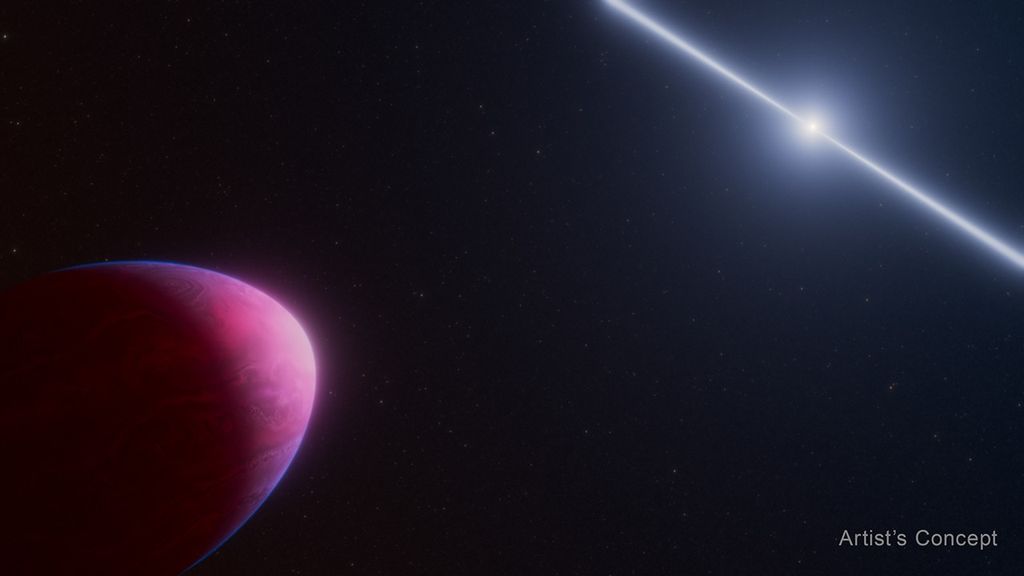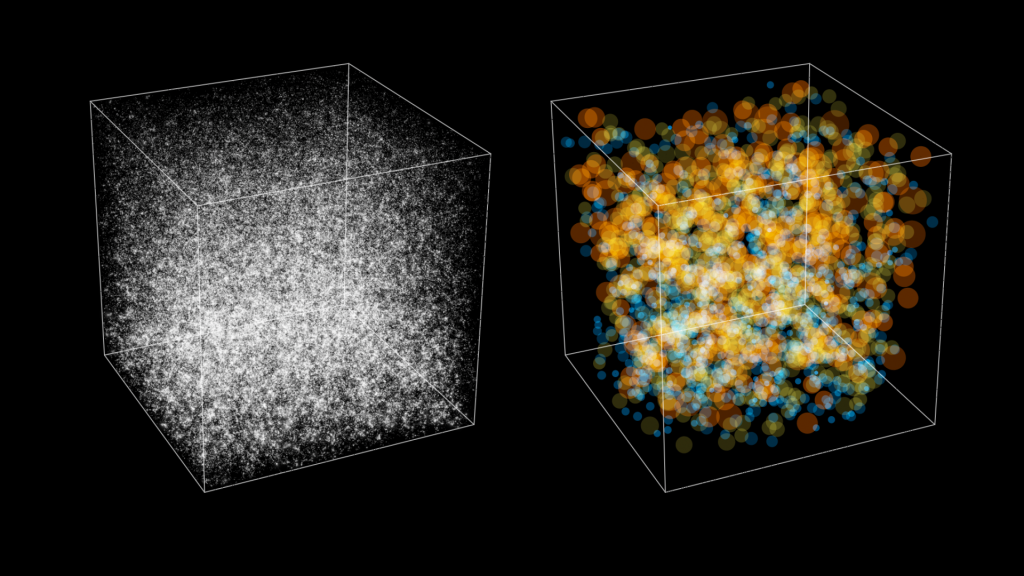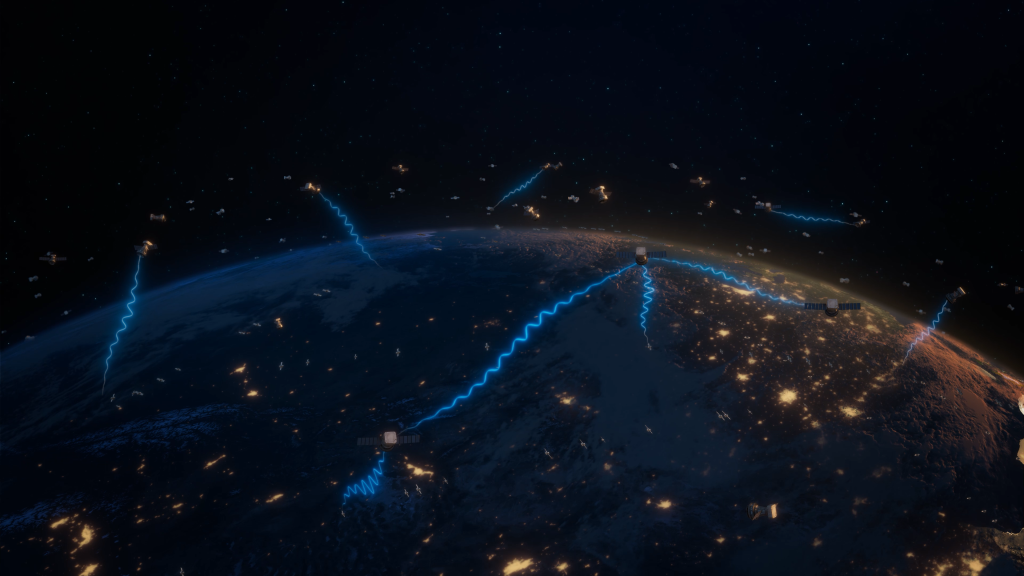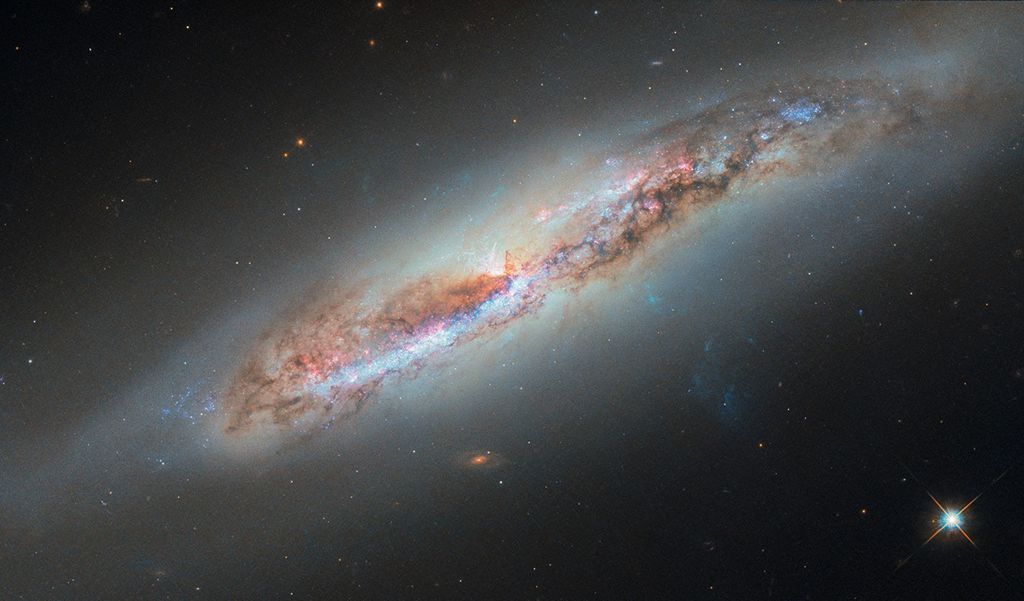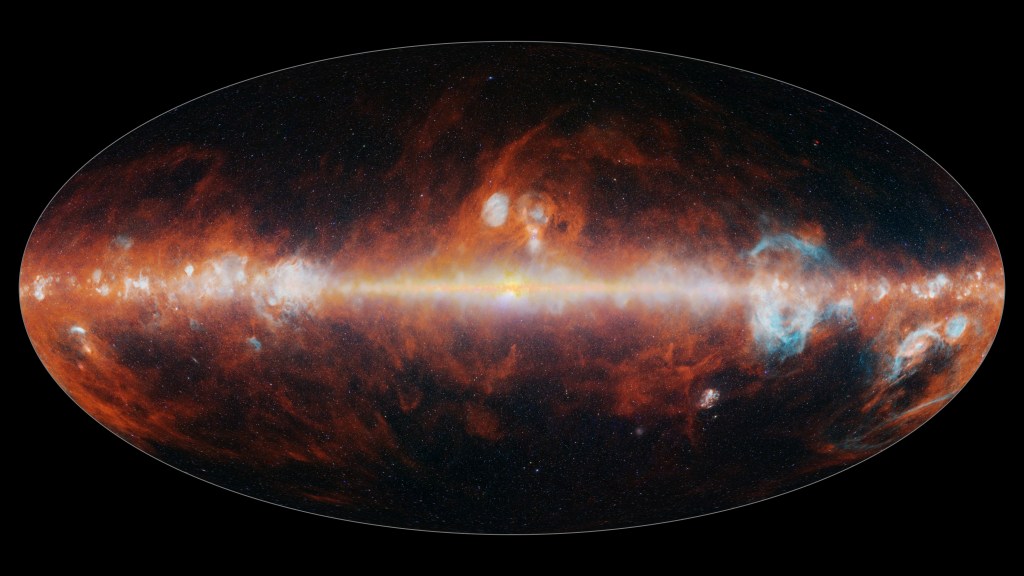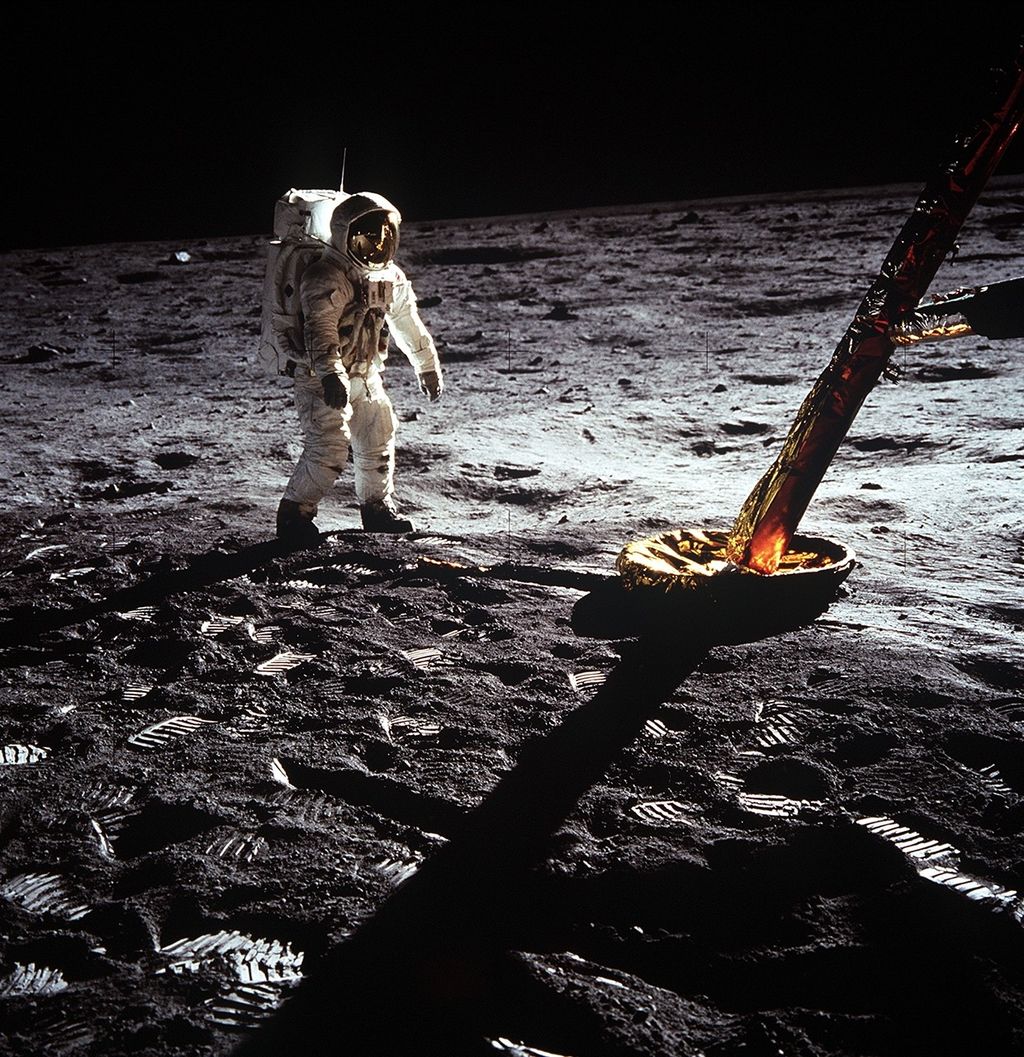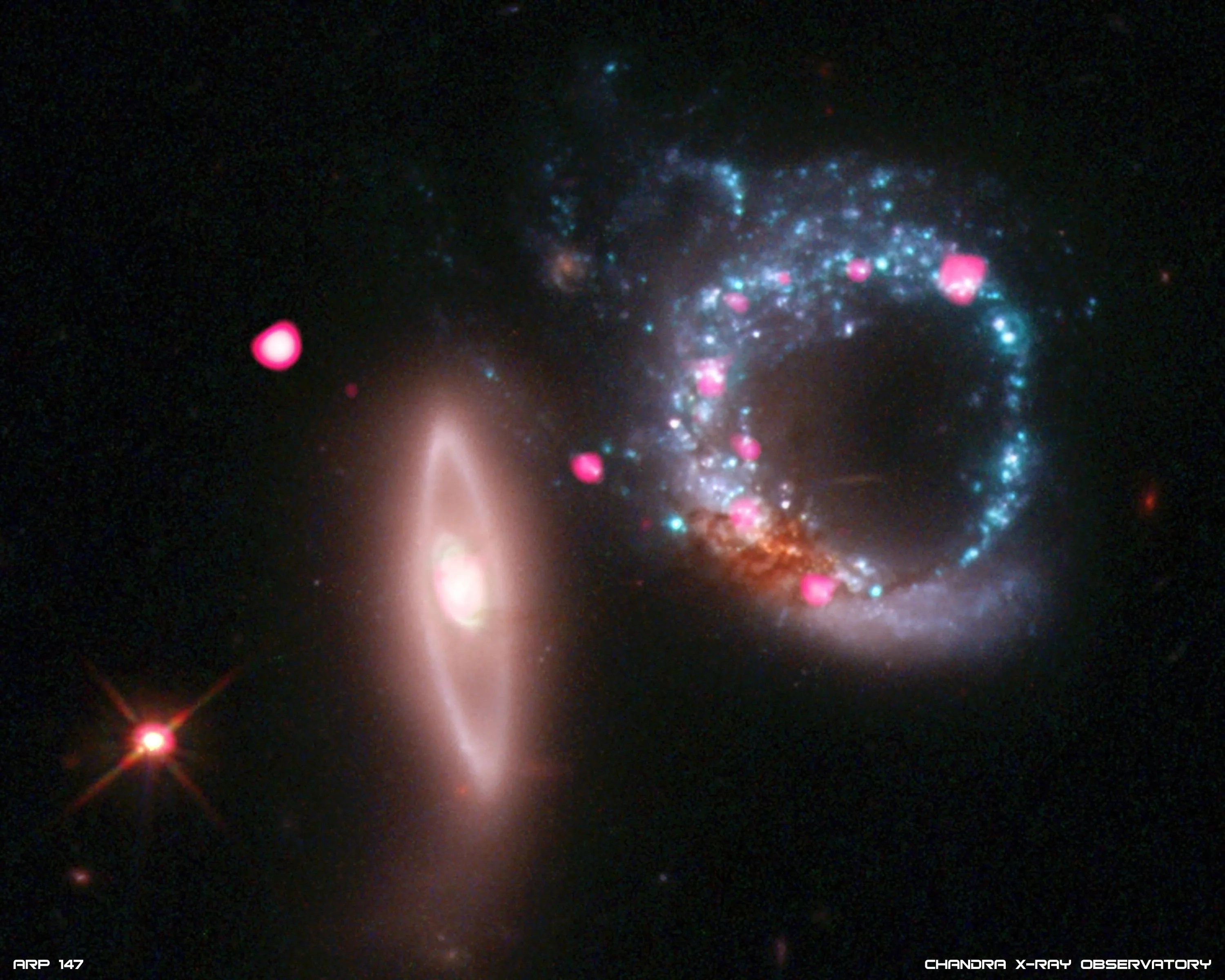
“Perfect 10” Galaxy Pair Arp 147
These two gravitationally interacting galaxies are oriented so that they appear to mark the number 10 in this Hubble Space Telescope image. The left-most galaxy, or the "one" in this image, is relatively undisturbed apart from a smooth ring of starlight. It appears nearly edge-on to our line of sight. The right-most galaxy, resembling a zero, exhibits a clumpy, blue ring of intense star formation. The blue ring was most probably formed after the galaxy on the left passed through the galaxy on the right. The dusty reddish knot at the lower left of the blue ring probably marks the location of the original nucleus of the galaxy that was hit.
Image Credit: NASA, ESA, and M. Livio (STScI)
- X
https://science.nasa.gov/image-detail/516472main_arp147_full/
Image CreditNASA, ESA, and M. Livio (STScI)
Size1024x819px


